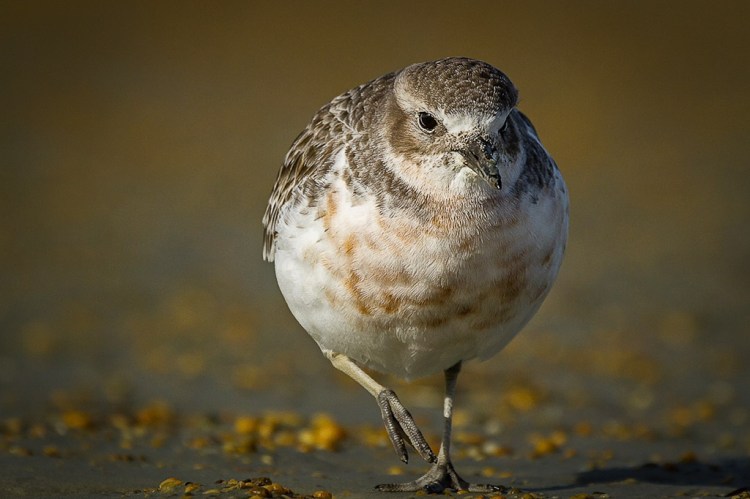Braided rivers are a common in Alaska, Canada, New Zealand’s South Island, and the Himalayas, which all contain young, rapidly eroding mountains. They are a unique environment inhabited by equally unique birds.
They simply cannot contain a river in a straight line. In floods especially they carry sediment, and in places where the flow slows down this settles on the bottom, thus raising it. And the water flows off to the side of least resistance. This will happen constantly during floods.
The technique for gathering bird numbers on these sort of rivers is quite simple: a team of four people spread out, in radio contact with each other, walk downstream counting every bird they see in front of them. On the ground or airborne.
And at that point the simplicity vanishes! Very finely tuned river crossing skills are needed, as well as “an eye” for the line that will give the best results. Plus physical stamina.
The tools of the trade are: a radio each, walking pole to aid crossings, binoculars, sun-cream, sun hat, good boots and gaiters [to stop gravels getting in the socks], GPS each, and a pen/paper/clipboard. Plus lunch, warm clothing, a camera etc. Warm dry socks also help at the end of the day.


The three year cycle is sometimes hard to maintain. The work has to be done in the spring when the birds are breeding, and this is when there is a high frequency of floods, with high levels due to snow melt.




This one is feigning a broken wing to lead the surveyor/photographer away from a nest.
After breeding, they either remain at the nesting area or move relatively short distances to nearby estuaries.


There are about six species that are primarily dependent on the braided river habitat: wrybill, banded dotterel, south island pied oyster-catcher, black-fronted tern, black-billed gull, black stilt) as well as the caspian tern and the pied stilt. The villain of the piece though is the black-back gull, as they predate on the eggs of the others.




We don’t encounter many lupins in the above mentioned rivers. This photo is in the nearby Ahuriri. Lupins, which the birds don’t like, offer cover to predators. Foolishly seeds were spread many decades ago by well meaning people wanting to add some colour to the grey landscape. And the seeds can remain for years until uncovered by a flood as they’re coated with a protective oil.






Obviously the results of such monitoring give a good guide as to the health of the environments concerned.
However the data as regards where breeding colonies are located, can be used for the most efficient locations for a new trapping lines. There is an attrition of traps though – during floods despite them being anchored by a chain to a long steel stake hammered in, they get washed away. Often the best compromise often considered, is for them to be near a bank that exhibits a history of stability, and place them with a shorter distance apart than the 200 mt standard in the bush, so as to create a fence of sorts.


















